RBS 2009 Annual Report Download - page 201
Download and view the complete annual report
Please find page 201 of the 2009 RBS annual report below. You can navigate through the pages in the report by either clicking on the pages listed below, or by using the keyword search tool below to find specific information within the annual report.-
 1
1 -
 2
2 -
 3
3 -
 4
4 -
 5
5 -
 6
6 -
 7
7 -
 8
8 -
 9
9 -
 10
10 -
 11
11 -
 12
12 -
 13
13 -
 14
14 -
 15
15 -
 16
16 -
 17
17 -
 18
18 -
 19
19 -
 20
20 -
 21
21 -
 22
22 -
 23
23 -
 24
24 -
 25
25 -
 26
26 -
 27
27 -
 28
28 -
 29
29 -
 30
30 -
 31
31 -
 32
32 -
 33
33 -
 34
34 -
 35
35 -
 36
36 -
 37
37 -
 38
38 -
 39
39 -
 40
40 -
 41
41 -
 42
42 -
 43
43 -
 44
44 -
 45
45 -
 46
46 -
 47
47 -
 48
48 -
 49
49 -
 50
50 -
 51
51 -
 52
52 -
 53
53 -
 54
54 -
 55
55 -
 56
56 -
 57
57 -
 58
58 -
 59
59 -
 60
60 -
 61
61 -
 62
62 -
 63
63 -
 64
64 -
 65
65 -
 66
66 -
 67
67 -
 68
68 -
 69
69 -
 70
70 -
 71
71 -
 72
72 -
 73
73 -
 74
74 -
 75
75 -
 76
76 -
 77
77 -
 78
78 -
 79
79 -
 80
80 -
 81
81 -
 82
82 -
 83
83 -
 84
84 -
 85
85 -
 86
86 -
 87
87 -
 88
88 -
 89
89 -
 90
90 -
 91
91 -
 92
92 -
 93
93 -
 94
94 -
 95
95 -
 96
96 -
 97
97 -
 98
98 -
 99
99 -
 100
100 -
 101
101 -
 102
102 -
 103
103 -
 104
104 -
 105
105 -
 106
106 -
 107
107 -
 108
108 -
 109
109 -
 110
110 -
 111
111 -
 112
112 -
 113
113 -
 114
114 -
 115
115 -
 116
116 -
 117
117 -
 118
118 -
 119
119 -
 120
120 -
 121
121 -
 122
122 -
 123
123 -
 124
124 -
 125
125 -
 126
126 -
 127
127 -
 128
128 -
 129
129 -
 130
130 -
 131
131 -
 132
132 -
 133
133 -
 134
134 -
 135
135 -
 136
136 -
 137
137 -
 138
138 -
 139
139 -
 140
140 -
 141
141 -
 142
142 -
 143
143 -
 144
144 -
 145
145 -
 146
146 -
 147
147 -
 148
148 -
 149
149 -
 150
150 -
 151
151 -
 152
152 -
 153
153 -
 154
154 -
 155
155 -
 156
156 -
 157
157 -
 158
158 -
 159
159 -
 160
160 -
 161
161 -
 162
162 -
 163
163 -
 164
164 -
 165
165 -
 166
166 -
 167
167 -
 168
168 -
 169
169 -
 170
170 -
 171
171 -
 172
172 -
 173
173 -
 174
174 -
 175
175 -
 176
176 -
 177
177 -
 178
178 -
 179
179 -
 180
180 -
 181
181 -
 182
182 -
 183
183 -
 184
184 -
 185
185 -
 186
186 -
 187
187 -
 188
188 -
 189
189 -
 190
190 -
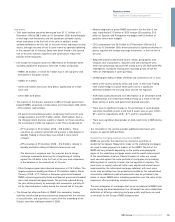 191
191 -
 192
192 -
 193
193 -
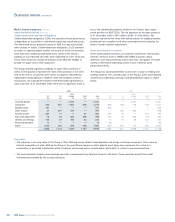 194
194 -
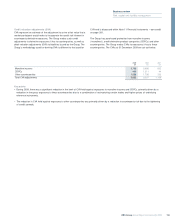 195
195 -
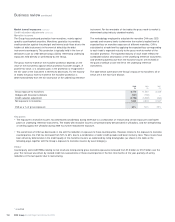 196
196 -
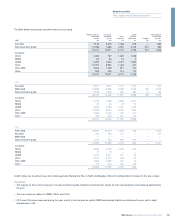 197
197 -
 198
198 -
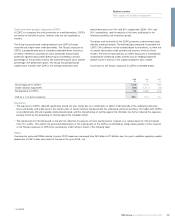 199
199 -
 200
200 -
 201
201 -
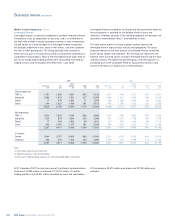 202
202 -
 203
203 -
 204
204 -
 205
205 -
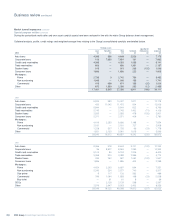 206
206 -
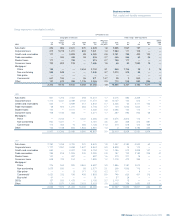 207
207 -
 208
208 -
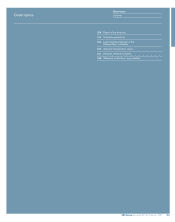 209
209 -
 210
210 -
 211
211 -
 212
212 -
 213
213 -
 214
214 -
 215
215 -
 216
216 -
 217
217 -
 218
218 -
 219
219 -
 220
220 -
 221
221 -
 222
222 -
 223
223 -
 224
224 -
 225
225 -
 226
226 -
 227
227 -
 228
228 -
 229
229 -
 230
230 -
 231
231 -
 232
232 -
 233
233 -
 234
234 -
 235
235 -
 236
236 -
 237
237 -
 238
238 -
 239
239 -
 240
240 -
 241
241 -
 242
242 -
 243
243 -
 244
244 -
 245
245 -
 246
246 -
 247
247 -
 248
248 -
 249
249 -
 250
250 -
 251
251 -
 252
252 -
 253
253 -
 254
254 -
 255
255 -
 256
256 -
 257
257 -
 258
258 -
 259
259 -
 260
260 -
 261
261 -
 262
262 -
 263
263 -
 264
264 -
 265
265 -
 266
266 -
 267
267 -
 268
268 -
 269
269 -
 270
270 -
 271
271 -
 272
272 -
 273
273 -
 274
274 -
 275
275 -
 276
276 -
 277
277 -
 278
278 -
 279
279 -
 280
280 -
 281
281 -
 282
282 -
 283
283 -
 284
284 -
 285
285 -
 286
286 -
 287
287 -
 288
288 -
 289
289 -
 290
290 -
 291
291 -
 292
292 -
 293
293 -
 294
294 -
 295
295 -
 296
296 -
 297
297 -
 298
298 -
 299
299 -
 300
300 -
 301
301 -
 302
302 -
 303
303 -
 304
304 -
 305
305 -
 306
306 -
 307
307 -
 308
308 -
 309
309 -
 310
310 -
 311
311 -
 312
312 -
 313
313 -
 314
314 -
 315
315 -
 316
316 -
 317
317 -
 318
318 -
 319
319 -
 320
320 -
 321
321 -
 322
322 -
 323
323 -
 324
324 -
 325
325 -
 326
326 -
 327
327 -
 328
328 -
 329
329 -
 330
330 -
 331
331 -
 332
332 -
 333
333 -
 334
334 -
 335
335 -
 336
336 -
 337
337 -
 338
338 -
 339
339 -
 340
340 -
 341
341 -
 342
342 -
 343
343 -
 344
344 -
 345
345 -
 346
346 -
 347
347 -
 348
348 -
 349
349 -
 350
350 -
 351
351 -
 352
352 -
 353
353 -
 354
354 -
 355
355 -
 356
356 -
 357
357 -
 358
358 -
 359
359 -
 360
360 -
 361
361 -
 362
362 -
 363
363 -
 364
364 -
 365
365 -
 366
366 -
 367
367 -
 368
368 -
 369
369 -
 370
370 -
 371
371 -
 372
372 -
 373
373 -
 374
374 -
 375
375 -
 376
376 -
 377
377 -
 378
378 -
 379
379 -
 380
380 -
 381
381 -
 382
382 -
 383
383 -
 384
384 -
 385
385 -
 386
386 -
 387
387 -
 388
388 -
 389
389 -
 390
390
 |
 |

Business review
Risk, capital and liquidity management
199RBS Group Annual Report and Accounts 2009
CVA attributable to other counterparties
The CVA for all other counterparties is calculated on a portfolio basis
reflecting an estimate of the amount a third party would charge to
assume the credit risk.
Expected losses are determined from the market implied probability of
defaults and internally assessed recovery levels. The probability of
default is calculated with reference to observable credit spreads and
observable recovery levels. For counterparties where observable data
do not exist, the probability of default is determined from the average
credit spreads and recovery levels of baskets of similarly rated entities.
A weighting of 50% to 100% is applied to arrive at the CVA. The
weighting reflects portfolio churn and varies according to the
counterparty credit quality.
Expected losses are applied to estimated potential future exposures
which are modelled to reflect the volatility of the market factors which
drive the exposures and the correlation between those factors. Potential
future exposures arising from vanilla products (including interest rate
and foreign exchange derivatives) are modelled jointly using the Group’s
core counterparty risk systems. At 31 December 2009, over 75% of the
Group’s CVA held in relation to other counterparties arises on these
vanilla products. The exposures arising from all other product types are
modelled and assessed individually. The potential future exposure to
each counterparty is the aggregate of the exposures arising on the
underlying product types.
Correlation between exposure and counterparty risk is also
incorporated within the CVA calculation where this risk is considered
significant. The risk primarily arises on trades with emerging market
counterparties where the gross mark-to-market value of the trade, and
therefore the counterparty exposure, increases as the strength of the
local currency declines.
Collateral held under a credit support agreement is factored into the
CVA calculation. In such cases where the Group holds collateral against
counterparty exposures, CVA is held to the extent that residual risk
remains.
CVA is held against exposures to all counterparties with the exception
of the CDS protection that the Group has purchased from HMT, as part
of its participation in the APS, due to the unique features of this
derivative.
The net income statement effect arising from the change in level of CVA for all other counterparties and related trades is shown in the table below.
£m
Credit valuation adjustment at 1 January 2009 (1,738)
Credit valuation adjustment at 31 December 2009 (1,588)
Decrease in credit valuation adjustment 150
Net debit relating to hedges, foreign exchange and other movements (841)
Net debit to income statement (income from trading activities) (691)
Key points
•Losses arose on trades hedging the CVA held against other counterparties due to the tightening of credit spreads. These losses, together with
realised losses from counterparty defaults, are the primary cause of the loss arising on foreign exchange, hedges, realisations and other
movements.
•The net income statement effect was driven by updates to the CVA methodology, hedges and realised defaults off-setting CVA movements.
–The primary update applied to the CVA methodology reflected a market wide shift in the approach to pricing and managing counterparty risk.
The methodology change related to the calculation of the probability of default. The basis for this calculation moved from a blended market
implied and historic measure to the market implied methodology set out above. Other updates to the methodology were made to reflect the
correlation between exposure and counterparty risk.
–Prior to the update to the CVA methodology, CVA moves driven by changes to the historic element of the blended measure were not hedged,
resulting in losses during the year arising from related CVA increases.
–The CVA is calculated on a portfolio basis and reflects an estimate of the losses that will arise across the portfolio due to counterparty defaults.
It is not possible to perfectly hedge the risks driving the CVA and this leads to differences between CVA and hedge movements. Differences
also arise between realised default losses and the proportion of CVA held in relation to individual counterparties.
